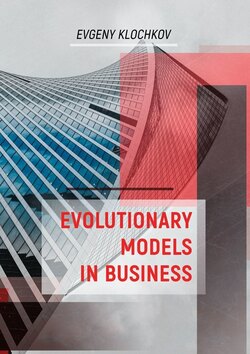Читать книгу Evolutionary Models in Business - Evgeny Klochkov - Страница 7
Chapter 1. Theoretical Models
1.3. Evolutionary Processes in the World of Business
ОглавлениеThe world is in constant motion, but fluctuations occur in a very limited framework. For example, the oxygen content in the air is on average about 21%, but slight deviations are possible. However, a fall below 18% can become critical not only for humans, but for all living things on the planet. Any individual on the Earth is a genetically stable organism, that is to say it is adapted only to certain conditions of existence that have their boundaries. To preserve life on the planet, there is an ongoing process of organisms adaptation to the changing environmental conditions, requiring a higher rate of change in bioorganisms than the rate of change in environmental conditions. Life follows the path of development of living beings with predetermined, genetically determined properties, with certain qualities of survival and with a relatively short cycle of existence. The biological goal of the life of any individual is to be born, to master the living space, to bring something new to the process of mastering the living space, conducive to survival, to reproduce the offspring, to transfer this new acquisition to them, to help them get used to the living space, and to die itself. Through death, life on the planet adapts to changes in the environment. The biological meaning of the death of individuals is the entire species existence continuation.
The same is happening in the world of business. A market economy is characterized by periods of predominantly extensive and predominantly intensive types of economic growth. This alternation is primarily based upon the cyclical nature of the economic movement, namely, continuous fluctuations of the market economy, when the growth of production is replaced by a decline, and an increase in business activity is followed by a decrease. In the economic literature, cycles of varying duration have been named after their researchers. Thus, cycles lasting 3—4 years are called Kitchin cycles, 10-year cycles bear the name of Juglar cycles or Marx cycles,
15-20-year cycles are Kuznets cycles, while 40-60-year cycles are named Kondratieff cycles. Cyclicality is characterized by periodic ups and downs in market conditions. Periods of increased economic activity are characterized by predominantly extensive development, while periods of decline in economic activity are characterized by the onset of predominantly intensive development. Consequently, a cycle is a constant dynamic characteristic of the market economy. It is a form of movement and development of the market economy. Located in a pulsating environment, companies try to survive, master the living space, bring something new to the mechanisms of development – and thus adapt to the existing market.
The history of the Coca-Cola product range can be cited as a vivid example of business adaptation to the changing conditions of the surrounding world. In the 1960s, it was a ‘black sweet drink’ producing firm. In the process of development, the company restructured its assortment every 5—7 years, reducing the sugar content, altering the color, adding carbonated and degassed water, iced tea, energy drinks, and juices to its product range. As a result, today the ‘black sweet drink’ accounts for only about 15% of Coca-Cola’s assortment. Another example is SEMCO, a Brazilian industrial equipment manufacturer. The company has introduced a self-management regime. SEMCO’s 3,000 employees determine their working hours and salaries on their own. Workers hire their own supervisors and evaluate their performance. There are hammocks hanging around the plant so people can take a nap at lunchtime. If an office worker comes to work on Saturday, then on Monday they can spend the first half of the day at the beach. The company has neither a rigid organizational structure, nor five-year plans, set of corporate values, or dress code. There are no hard-copy rules or program memoranda, except for the comic-printed Survival Manual for new employees, which summarizes the unusual customs of SEMCO. Tochka Bank is an example from the Russian market. It is a multi-brand bank operating on the basis of Otkritie FC Bank and QIWI Bank, which implements holacracy, i.e. an organization management system where powers and responsibility for decision-making are distributed throughout the entire holarchy of self-organizing teams rather than being vested in a management hierarchy. Holacracy distinguishes between roles and the people who fill them. There are obligations. And there is transparency in decision-making.
